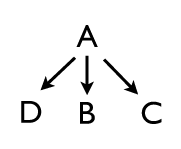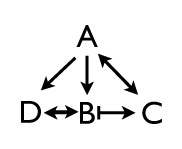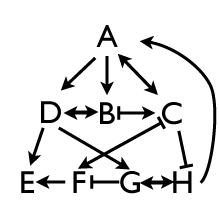After our disastrous chick lab — it turns out that getting fertilized chicken eggs shipped to remote Morris, Minnesota during a blizzard is a formula for generating dead embryos — the final developmental biology lab for the semester is an easy one. I lectured the students on structuralism and how there are more to cells then genes (there’s also cytoplasm and membranes and environment) earlier today. This afternnon I’ve given them recipes for soap bubble solution and told them to play. They’re supposedly making little model multicellular organisms by chaining soap bubbles together, and observing how the membranes follow rules of organization just like the ones we see in living tissue.
In case you’re wondering what the recipe is so you can do it too, here’s my bubble soap formula:
-
5ml Dawn dishwashing soap
-
100ml DI water
-
1ml glycerine
It gets better as it ages — there are perfumes and a small amount of alcohol solvent in the dishwashing liquid which evaporate off with time. The students are playing with concentrations, and if you’re making it up fresh and don’t want to wait until tomorrow, you can increase the concentrations of soap and glycerine.
The more glycerine you add, the more long-lasting the bubbles are…and unfortunately, the heavier they are. If you want bubbles that will waft gently on the breeze, you’ll want less glycerine. It’s a very forgiving recipe, just play.
I’ve also provided the students with a couple of books: the classic Soap Bubbles: Their Colors and Forces Which Mold Them by C.V. Boys, and The Science of Soap Films and Soap Bubbles
by Cyril Isenberg. They’re more about math and physics, but they have some nice illustrations. These are projects you can do at home with cheap ingredients bought at the grocery store, so those of you with kids might try playing with it this summer. There are simple rules about the angles of intersection between bubbles — if you’re mathematically inclined, take pictures and use a protractor and see if you can work them out. There’s also some really cool stuff going on with colors, since the bubbles have a gradient of thickness from top to bottom and you get wonderful colors caused by refraction and reflection and phase shifts across the membrane.
OK, if you don’t have kids, you have my permission to play with soap bubbles, too. Tell everyone who looks at you funny that you’re doing Science!





